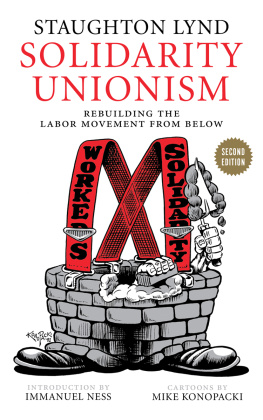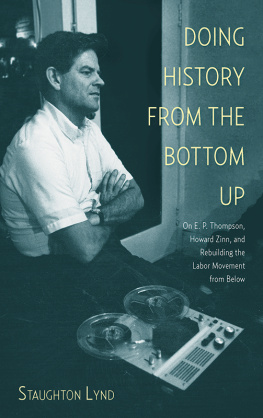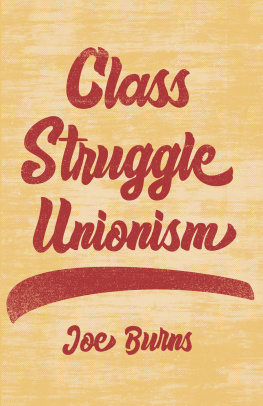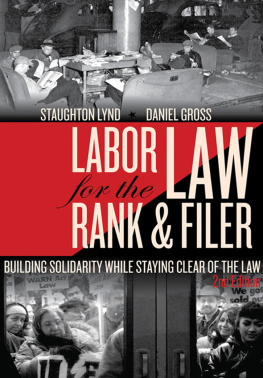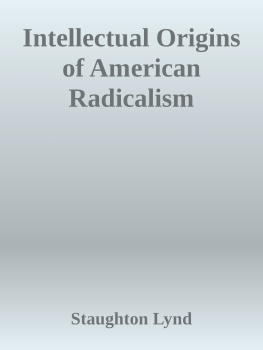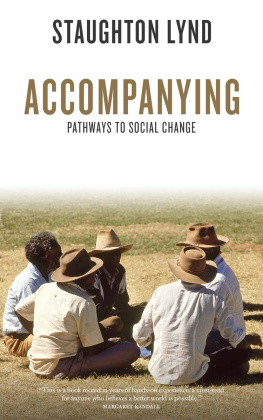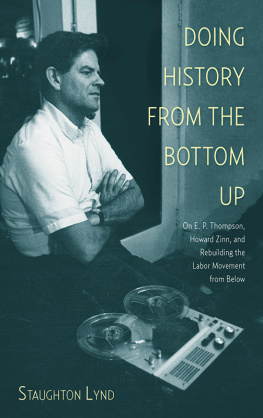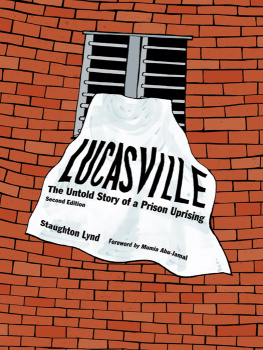Lynd Staughton - Solidarity Unionism
Here you can read online Lynd Staughton - Solidarity Unionism full text of the book (entire story) in english for free. Download pdf and epub, get meaning, cover and reviews about this ebook. year: 2015, publisher: PM Press, genre: Politics. Description of the work, (preface) as well as reviews are available. Best literature library LitArk.com created for fans of good reading and offers a wide selection of genres:
Romance novel
Science fiction
Adventure
Detective
Science
History
Home and family
Prose
Art
Politics
Computer
Non-fiction
Religion
Business
Children
Humor
Choose a favorite category and find really read worthwhile books. Enjoy immersion in the world of imagination, feel the emotions of the characters or learn something new for yourself, make an fascinating discovery.
- Book:Solidarity Unionism
- Author:
- Publisher:PM Press
- Genre:
- Year:2015
- Rating:5 / 5
- Favourites:Add to favourites
- Your mark:
- 100
- 1
- 2
- 3
- 4
- 5
Solidarity Unionism: summary, description and annotation
We offer to read an annotation, description, summary or preface (depends on what the author of the book "Solidarity Unionism" wrote himself). If you haven't found the necessary information about the book — write in the comments, we will try to find it.
Lynd Staughton: author's other books
Who wrote Solidarity Unionism? Find out the surname, the name of the author of the book and a list of all author's works by series.
Solidarity Unionism — read online for free the complete book (whole text) full work
Below is the text of the book, divided by pages. System saving the place of the last page read, allows you to conveniently read the book "Solidarity Unionism" online for free, without having to search again every time where you left off. Put a bookmark, and you can go to the page where you finished reading at any time.
Font size:
Interval:
Bookmark:
PRAISE
Solidarity Unionism is an essential text for all rank-and-file workers as well as labor activists. Beautifully succinct, it outlines how CIO unions grew into an ineffectual model for rank-and-file empowerment, and provides examples of how alternative labor organizations have flourished in the wake of this. Lynd illustrates to a new generation of workers that we do have alternatives, and his call for a qualitatively different kind of labor organization gives us an ideological and strategic framework that we can apply in our day-to-day struggles on the shop floor.
Diane Krauthamer, Industrial Worker
Brother Staughton Lynd continues to offer an informed, critical voice and many important ideas for todays labor movement. Anyone fighting for a better world for working people will be glad to read this revised edition of Solidarity Unionism, and to pass it on to students, friends, and fellow workers.
Michael Honey, Haley Professor of Humanities, University of Washington-Tacoma, and author of Going Down Jericho Road
Solidarity Unionism is based in a vision of genuine democracy. Its accessibly written and rich in practical examples. Ive used it successfully in study groups and labor education courses both to draw out and learn from participants own experiences and to plan our next steps in struggles. Challenging some of what are conventionally thought of as wins (e.g., dues checkoff or signed contracts), the book impels the kind of strategic thinking otherwise lacking in most of labor and the Left.
Norm Diamond, former president of Pacific Northwest Labor College and coauthor of The Power in Our Hands
Staughton Lynds Solidarity Unionism mines his decades of labor activism and a century of American workers struggles to shine a beacon on an alternative path that replaces top-down labor organization with local autonomy and community-level networking. Before you despair of reasserting workers rights and power, read Solidarity Unionism!
Jeremy Brecher, Labor Network for Sustainability, author of Strike!
In Solidarity Unionism, workers are protagonists, not spectators, and that makes all the difference in the world. Staughton Lynds ideas will be at the heart of the next mass worker rising.
Daniel Gross, executive director of Brandworkers and cofounder of IWW Starbucks Workers Union
Solidarity Unionism: Rebuilding the Labor Movement from Below
Second Edition
2015 Staughton Lynd
This edition 2015 PM Press
All rights reserved. No part of this book may be transmitted by any means without permission in writing from the publisher.
ISBN: 978-1-62963-096-0
LCCN: 2015930870
Cover design by John Yates/stealworks.com
Cover artwork by Mike Konopacki
Interior design by Jonathan Rowland
PM Press
PO Box 23912
Oakland, CA 94623
www.pmpress.org
10 9 8 7 6 5 4 3 2 1
Printed by the Employee Owners of Thomson-Shore in Dexter, Michigan.
www.thomsonshore.com
S TAUGHTON L YNDS BOOK WAS MEANT TO GIVE HOPE TO rank-and-file workers in the early 1990s battered by decades of continuous assault by capital and the state.
From the 1970s to the 1990s, business had emerged triumphant over established unions in the United States and throughout the world. Organized labor and academic liberals were mesmerized by the image of a strong welfare state and robust political parties as defenders of working-class interests against an ascendant capitalist class. Three years after this book was published, beleaguered leaders of the AFL-CIO placed the blame for the decline of organized labor in the United States on its own ossified leadership. They were convinced that all that was necessary to rebuild organized labor was to replace the existing union leadership with smart progressives skilled at recruiting workers. Union leaders ignored and dismissed their own members who were waging a prolonged insurgency for a voice in their organizations. Today, after twenty more years of political and organizational gimmickry, established unions have seen membership decline even further and remain impervious to rank-and-file participation in their organizations.
Now more than ever, this book remains prescient for working people.
For a couple of decades Staughton and I have, without end, discussed building and strengthening authentic unions forged in solidarity. What does it mean to have a workers union based on solidarity? Must solidarity unions remain independent of existing unions? Are workers centers the answer to promoting rank-and-file activity? How do we foster and strengthen solidarity unions across the United States and the world?
Staughton, among the leading historians of our time, asked all of us to look for real examples rather than abstract concepts that may have fit more neatly into our worldviews. In this book he takes succor in the lived experiences of courageous workers in Youngstown, Ohio, and beyond, recognizing that they have a common interest in solidarity, as he and his wife Alice showed in their book Rank and File.
In Solidarity Unionism, Staughton refers to the notion of parallel labor unions of rank-and-file workers. Parallel unions are committees of workers on the shop floor, and within the communities where their members live and work. They build solidarity through common action. They have been fundamental to the history and growth of working-class organizations in the United States and throughout the world.
When the official labor bodies put down workers, parallel unions like the Workers Solidarity Club of Youngstown have come together outside of official union structures to defend workers common interests. As Staughton shows in this book, these new structures are not new. They demonstrate that life exists outside of the entrenched bureaucratic unions that have bound and restricted worker self-activity since the formation of the CIO in the 1930s. They are the lifeblood of workers organizations and what traditional unions have suppressed as they have sought to become third-party brokers between management and labor.
But I always put the question to Staughton: How do we build working-class organizations that are strong and lasting? The thesis of this book is that it is possible to have strong and lasting unions based on rank-and-file solidarity. We must look to examples drawn from the Industrial Workers of the World (IWW) and solidarity unions in the Global South. These workers in Africa, Asia, Latin America, and beyond are the most oppressed laborers in the world. They are employed in factories and mines at a fraction of the wages earned in North America, Japan, and Western Europe. Today, these workers exemplify the spirit of Solidarity Unionism as they struggle together for dignity and multinational capital, in league with state officials, seeks to marginalize, divide, and extract from them.
The tragedy of traditional unions is that they have let us all down. As Staughton writes: The existing trade unions may drop our grievances, compromise our just demands, and break our hearts, but we are not trying to destroy them. However, the assault on existing unions has also opened up a new front of worker activism that the capitalist class fears more than ever. Since most unions have signed on to laws and contracts that have given up workers right to strike, young rank-and-file workers recognize that management-labor cooperation is the source of their oppression. They are engaging in direct action and mass strikes, and forming workers assemblies, independent workers committees and organizations. If this self-activity from below goes unheeded, traditional unions risk losing any relevancy to most workers.
Next pageFont size:
Interval:
Bookmark:
Similar books «Solidarity Unionism»
Look at similar books to Solidarity Unionism. We have selected literature similar in name and meaning in the hope of providing readers with more options to find new, interesting, not yet read works.
Discussion, reviews of the book Solidarity Unionism and just readers' own opinions. Leave your comments, write what you think about the work, its meaning or the main characters. Specify what exactly you liked and what you didn't like, and why you think so.

